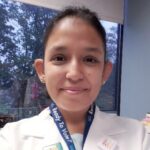Takeaway
As healthcare professionals, we’ve chosen to make healing and preventative care our life’s work. Working to mitigate firearm injuries and deaths will create safer communities and is part of our professional commitment.

Lifelong Learning in Clinical Excellence | August 8, 2023 | 2 min read
By Ankita Sagar, MD, Brooklyn, New York
My husband called while I was at a medical conference. His voice was heavy. “My coworker was injured in yesterday’s shooting at the medical office.” He then asked, “What’s your escape plan when a patient walks in with a gun?”
As I thought about the complexity of creating an effective escape plan, I wondered if I’d respond as a wife, a sister, a daughter, a dog mom. Or would I let the inner voice of the physician, the empath, the optimist, guide me, putting my patient above all else. “My plan is to deescalate the situation,” I told my husband.
“No,” he said, “You need to run, or hide if that’s not possible.”
Now, I’m someone who automatically counts room exits, knows the locations of stairs and elevators, and maps out evacuation routes in my neighborhood in case of a hurricane. And I’m not alone.
Throughout the U.S., healthcare professionals, teachers, grocery store workers, staff at places of worship, mall workers, law enforcement, and many others, are engaging in the same conversation: planning escape routes. How did our society come to accept this as a normal and unremarkable part of life? This is world of our own making.
Physicians hold leadership roles but our voices have remained largely silent when it comes to the impact of firearms on disability and mortality. While our professional societies have made efforts to address this issue collectively, it’s crucial for each of us, as constituents and leaders, to recognize the power we hold. We must actively engage in this conversation from both the clinician and the patient perspectives.
As healthcare professionals, we’ve chosen to make healing and preventative care our life’s work. Working to mitigate firearm injuries and advocate for legislation that enhances firearm safety will obviously create safer communities and is well aligned with our professional commitment. Just as seat belts, vaccines, nutritious food, and clean water are integral to individual and community health, firearm safety is an essential component that cannot be overlooked.
By actively participating in this dialogue, we can contribute our unique insights and experiences to shape the narrative surrounding firearm-related concerns. It’s through our individual and collective efforts that we can foster meaningful change, driving policies and practices that prioritize the well-being of both individuals and communities.
What we can do:
1. Screen patients for gun safety at home and at the workplace. Be respectful and open the conversation with a question about how the patient and their loved ones approach safety and preventing injury. Here are some ideas for how to talk with patients about this: BulletPoints Tips.
2. Share practices on safe storage like BulletPoints Project’s Infographic on Safe Storage Practices.
3. Have open conversations about firearms with colleagues. Ryan Busse offers some tips on his perspective as a gun owner.
As leaders in our fields and communities, we hold the power to make change. Change to create a healthier and safer world for everyone.
This piece expresses the views solely of the author. It does not necessarily represent the views of any organization, including Johns Hopkins Medicine.

